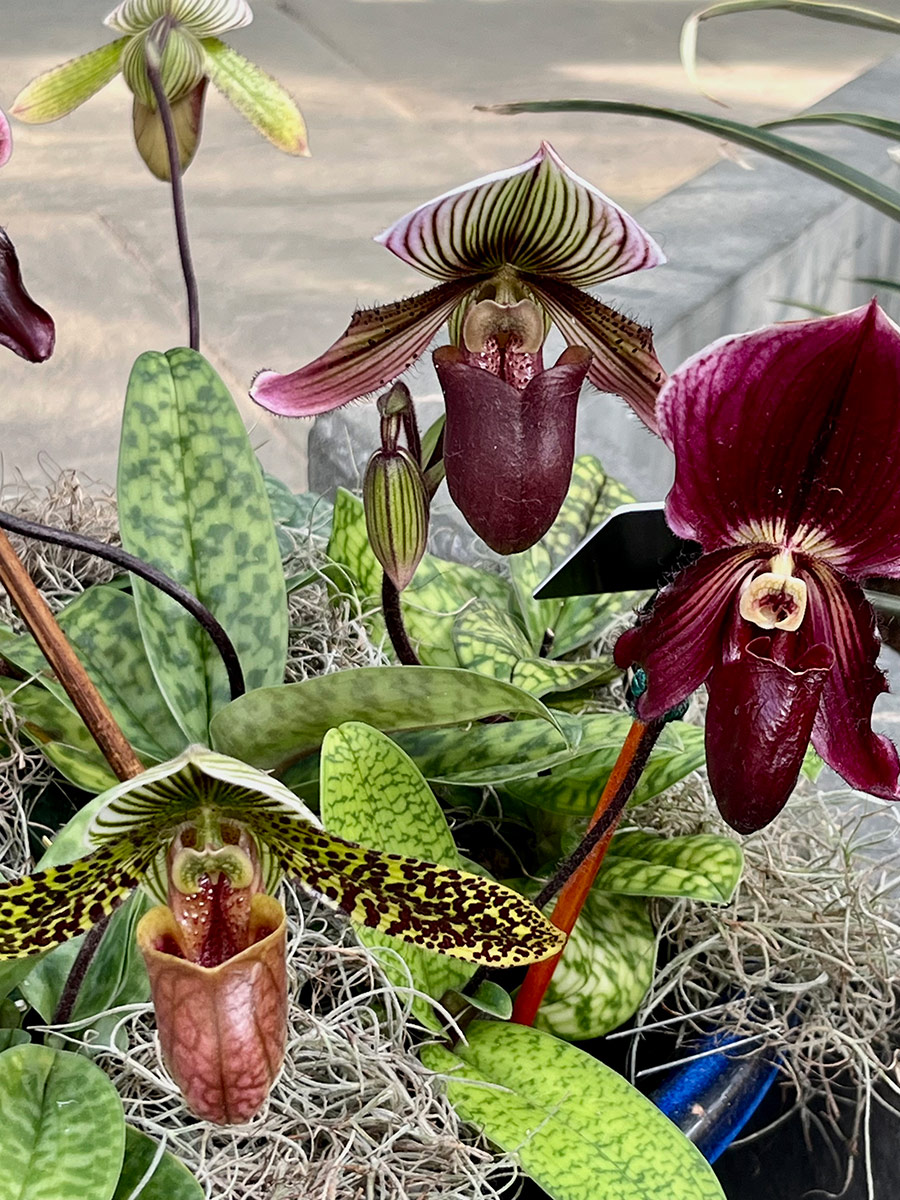Happy Friday GPODers!
Today’s excursion to another fabulous botanic garden comes courtesy of Fran Watson from Martha’s Vineyard, Massachusetts. Fran has shared her beautiful New England garden several times before (Check out those submissions here: Fran’s Island Garden, Gardening on Martha’s Vineyard and Jewels of Fall in Fran’s Garden), but she has also shared her trip to Fort Worth Botanic Garden with us last summer (GPOD on the Road: Fort Worth Botanic Garden). Her adventures around the US visiting beautiful public gardens continues with a trip to the United States Botanic Garden in Washington, D.C. Her visit coincided with their annual orchid exhibit, with this year’s theme being Orchids: Masters of Deception. This exhibit runs until April 27th, so you can still squeeze in a visit if you live in the DMV area!
Hi GPOD, My name is Fran Watson and I live on Martha’s Vineyard of Massachusetts. I am a dedicated fan of GPOD and an enthusiastic gardener. I made several submissions in the past. I recently visited our capital and went to the US botanic garden, a favorite spot of mine in DC. I am sending photos of the orchid room. I personally have 5 orchids which are all in bloom at the moment! Hope you enjoy and see how varied orchids are. The most interesting bloom was the Bulbophyllum purpureorhachis from central Africa. Orchids are deceptive plants in that they lure pollinators into the flower but don’t have nectar to give. Enjoy!
The sign in this photo reads: The United States Botanic Garden maintains and continues to acquire new specimens to a diverse collection of orchids, representing the largest plant group in our care. Originally a display collection of cultivated orchids, the focus shifted in the 1990s towards prioritizing conversation and eduction, allowing visitors to appreciate the beauty of orchids while learning about their ecological importance and unique adaptions.
And some further information found on their website states:
Acquisition of species continues for the purposes of conservation, education, and display. Orchid cultivars of significant horticultural and aesthetic impact are maintained or acquired to support display. The collection is primarily displayed in the Orchid and The Tropics houses of the Conservatory, and in the annual orchid exhibit held in partnership with Smithsonian Gardens.
The USBG collaborates with the Smithsonian Institution in support of the North American Orchid Conservation Center (NAOCC). The goal of this collaboration, with the assistance of other partnering institutions, is the conservation, preservation, and public education about the orchid species native to the United States and Canada.
 The flowers of this first orchid look like mini rays of sunshine. Definitely a oncidium, possibly the zesty Sweet Sugar Lemon Drop variety (Oncidesa Aloha Iwanaga x varicosum, Zones 10–12).
The flowers of this first orchid look like mini rays of sunshine. Definitely a oncidium, possibly the zesty Sweet Sugar Lemon Drop variety (Oncidesa Aloha Iwanaga x varicosum, Zones 10–12).
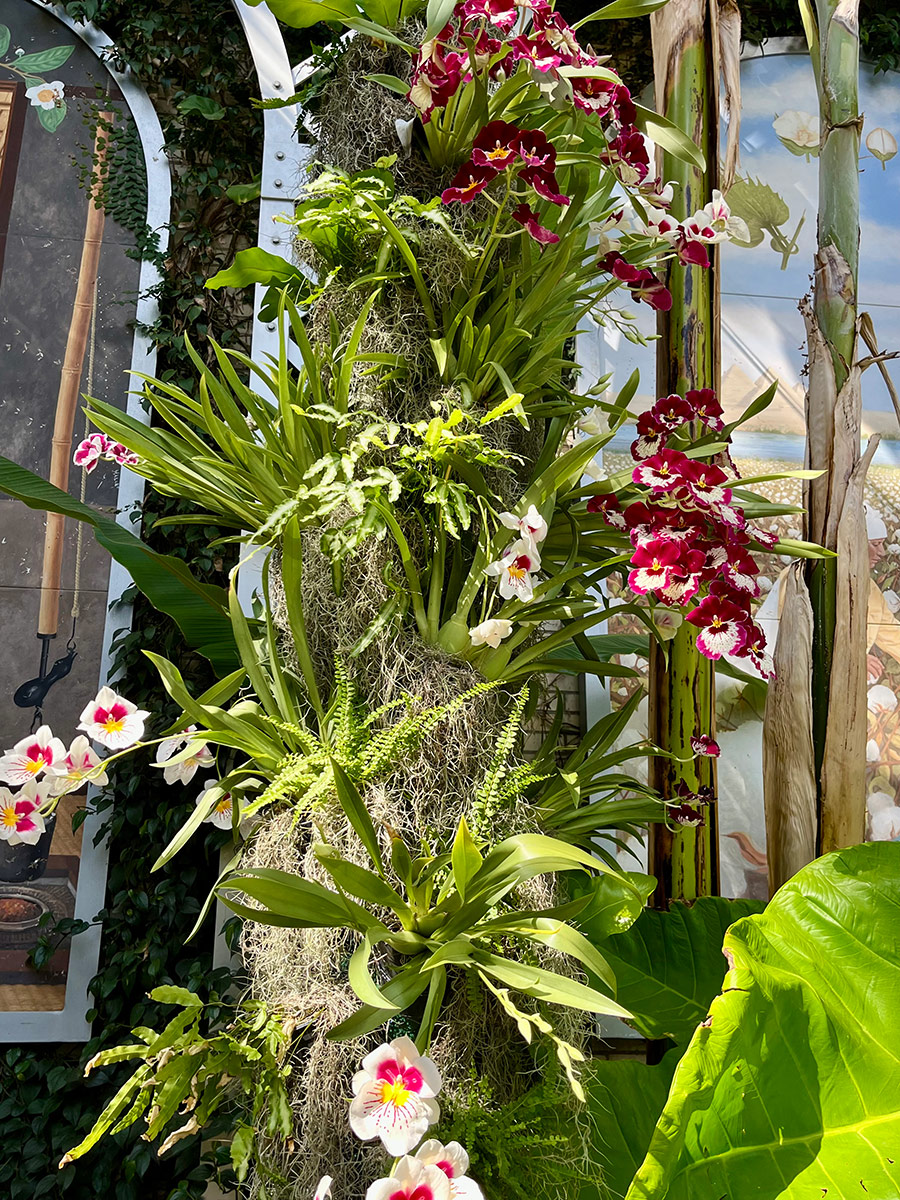 A tower of treasures! Many orchids are epiphytic, meaning they grow on the surface of another plant for support and are able to pull moisture and nutrients from the air rather than from soil. Not only is this an incredible, superpower-like ability, it also allows for endless possibilities in mounting and arranging these impressive plants.
A tower of treasures! Many orchids are epiphytic, meaning they grow on the surface of another plant for support and are able to pull moisture and nutrients from the air rather than from soil. Not only is this an incredible, superpower-like ability, it also allows for endless possibilities in mounting and arranging these impressive plants.
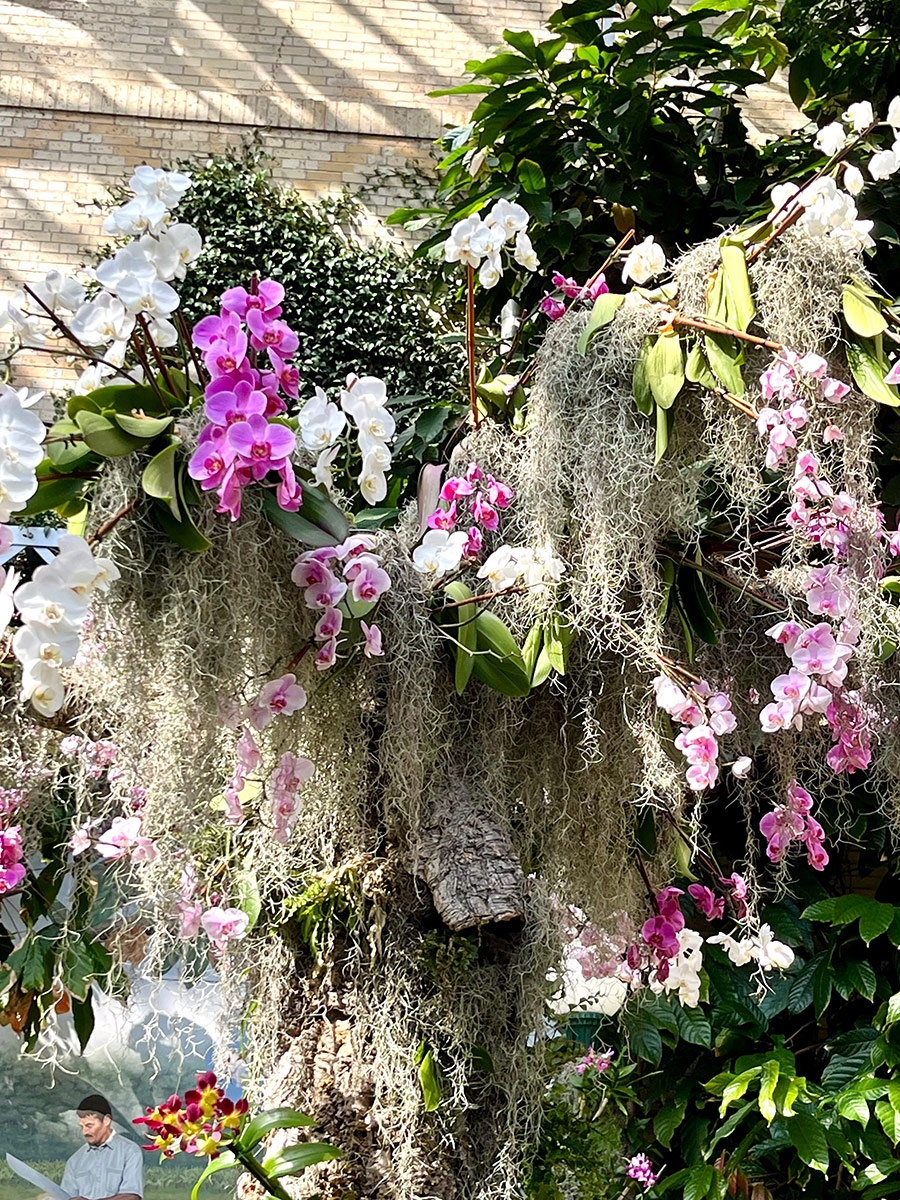 Another incredible display is an abstract configuration of pink and white moth orchids (Phalaenopsis spp. and cvs., Zones 10–12) with lots of curly Spanish moss (Tillandsia usneoides, Zones 8–11)
Another incredible display is an abstract configuration of pink and white moth orchids (Phalaenopsis spp. and cvs., Zones 10–12) with lots of curly Spanish moss (Tillandsia usneoides, Zones 8–11)
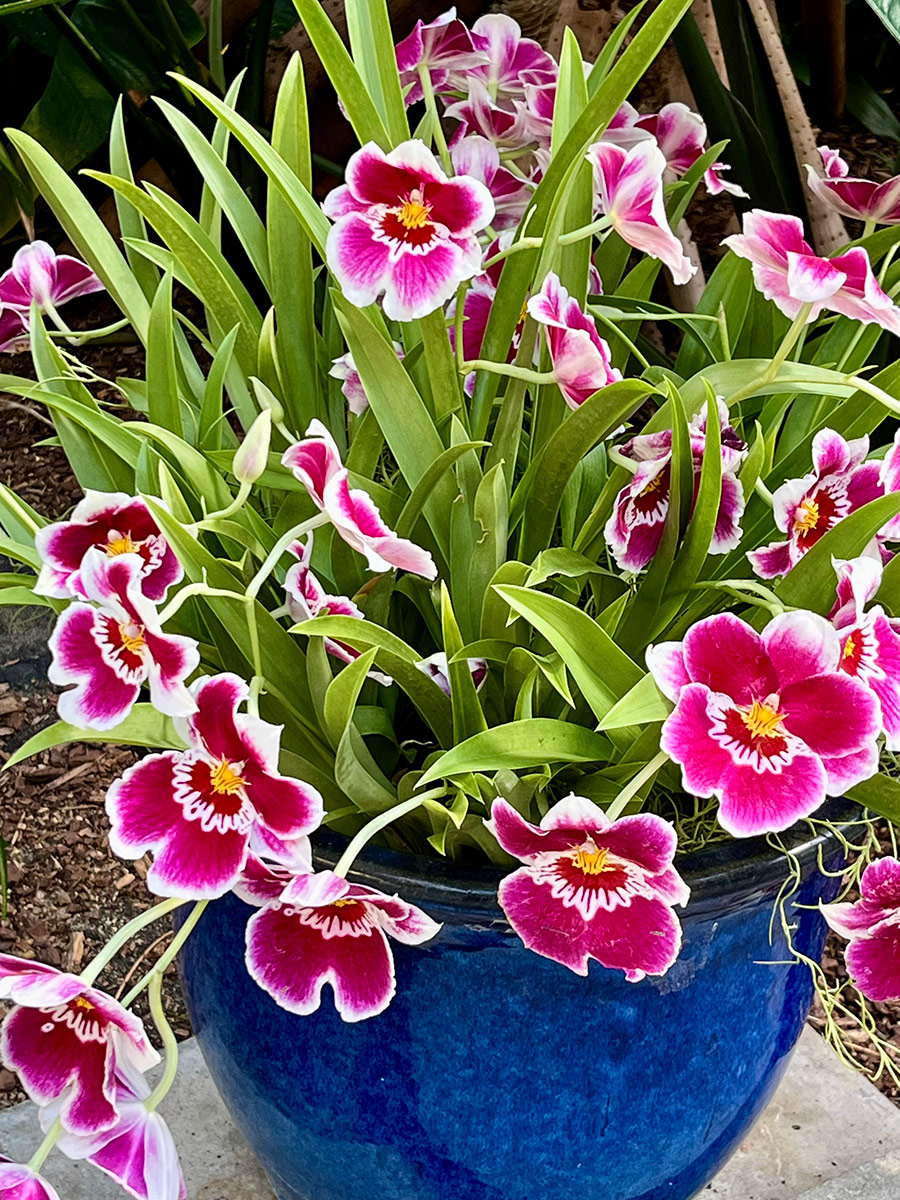 But these gorgeous plants don’t need fancy or elaborate displays to impress. This Rouge ‘Picardie’ miltonia orchid (Miltoniopsis Rouge ‘Picardie’, Zones 10–12) is enchanting in a bright blue pot. Miltonia orchids are also commonly called pansy orchids, and the similarities are definitely uncanny.
But these gorgeous plants don’t need fancy or elaborate displays to impress. This Rouge ‘Picardie’ miltonia orchid (Miltoniopsis Rouge ‘Picardie’, Zones 10–12) is enchanting in a bright blue pot. Miltonia orchids are also commonly called pansy orchids, and the similarities are definitely uncanny.
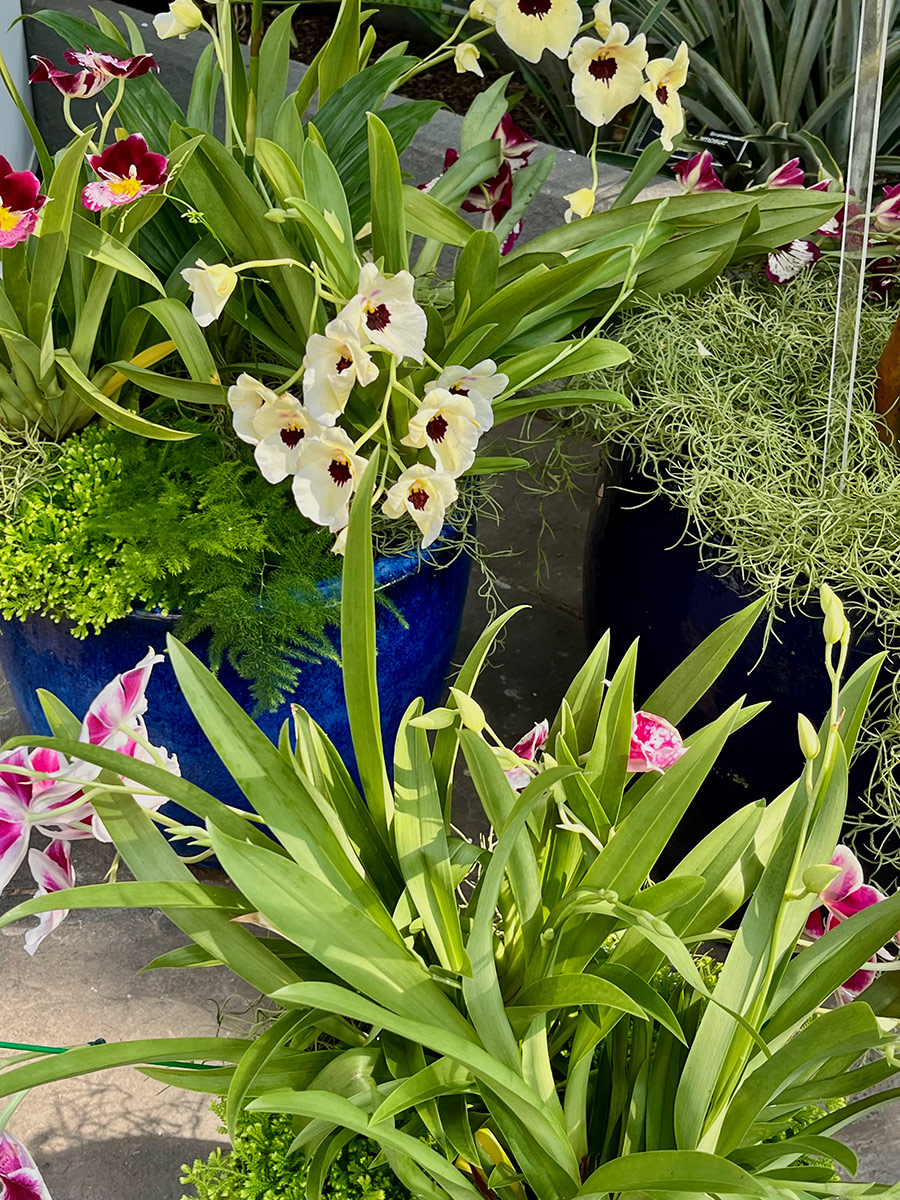 More miltonia orchids in beautiful blue pots. Also like pansies, miltonia flowers can be found in a range of colors and combinations.
More miltonia orchids in beautiful blue pots. Also like pansies, miltonia flowers can be found in a range of colors and combinations.
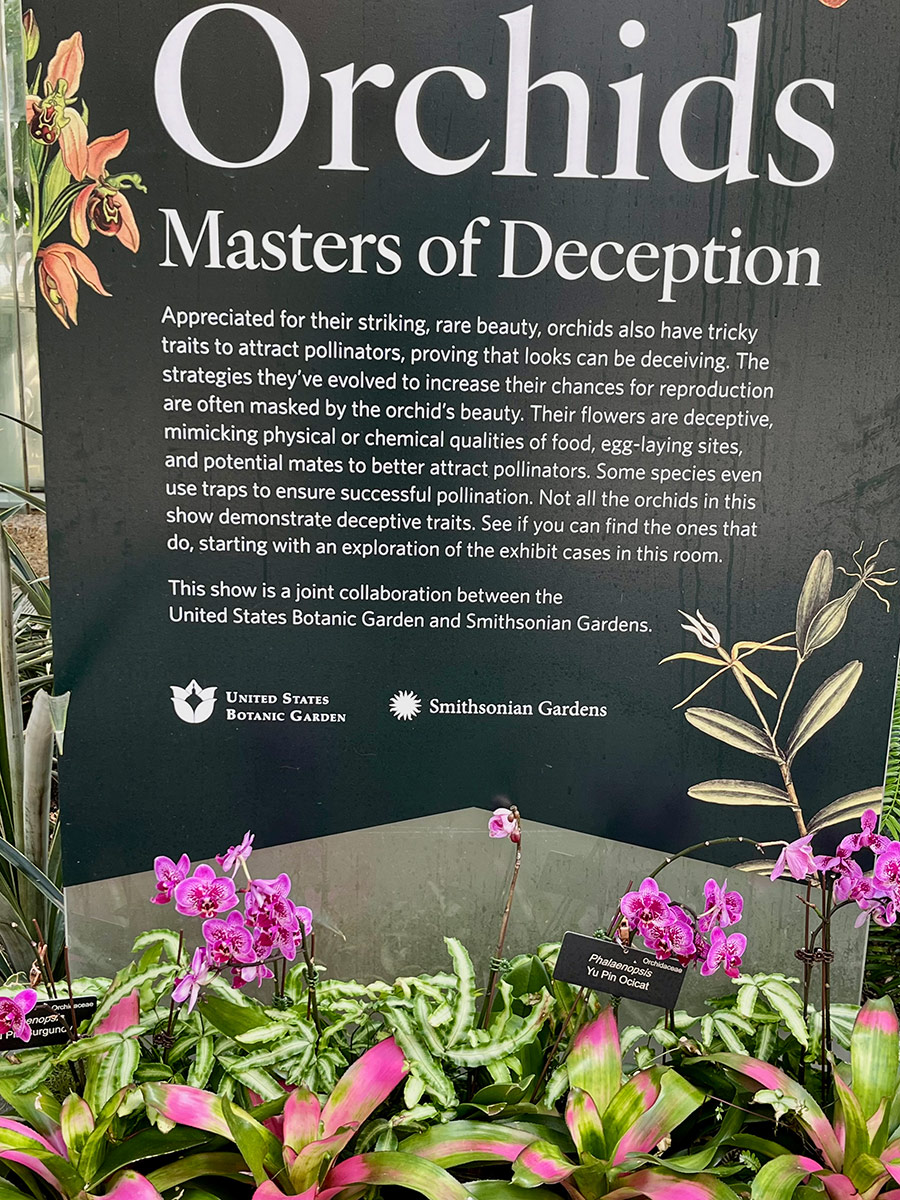 A sign giving context to the theme of this year’s exhibit. When you really start diving into orchids and the incredible shapes and forms of flowers, it’s clear that some amazing evolution is at work. The human eye often interprets these shapes as beautiful or interesting, but there is often more than meets the eye.
A sign giving context to the theme of this year’s exhibit. When you really start diving into orchids and the incredible shapes and forms of flowers, it’s clear that some amazing evolution is at work. The human eye often interprets these shapes as beautiful or interesting, but there is often more than meets the eye.
Paphiopedilum orchids, also known as Venus slippers and lady slippers, are orchids that are pretty obvious in their deception. As insects try to collect nectar, they fall trap to paphiopedilum’s pouch-like flowers. The
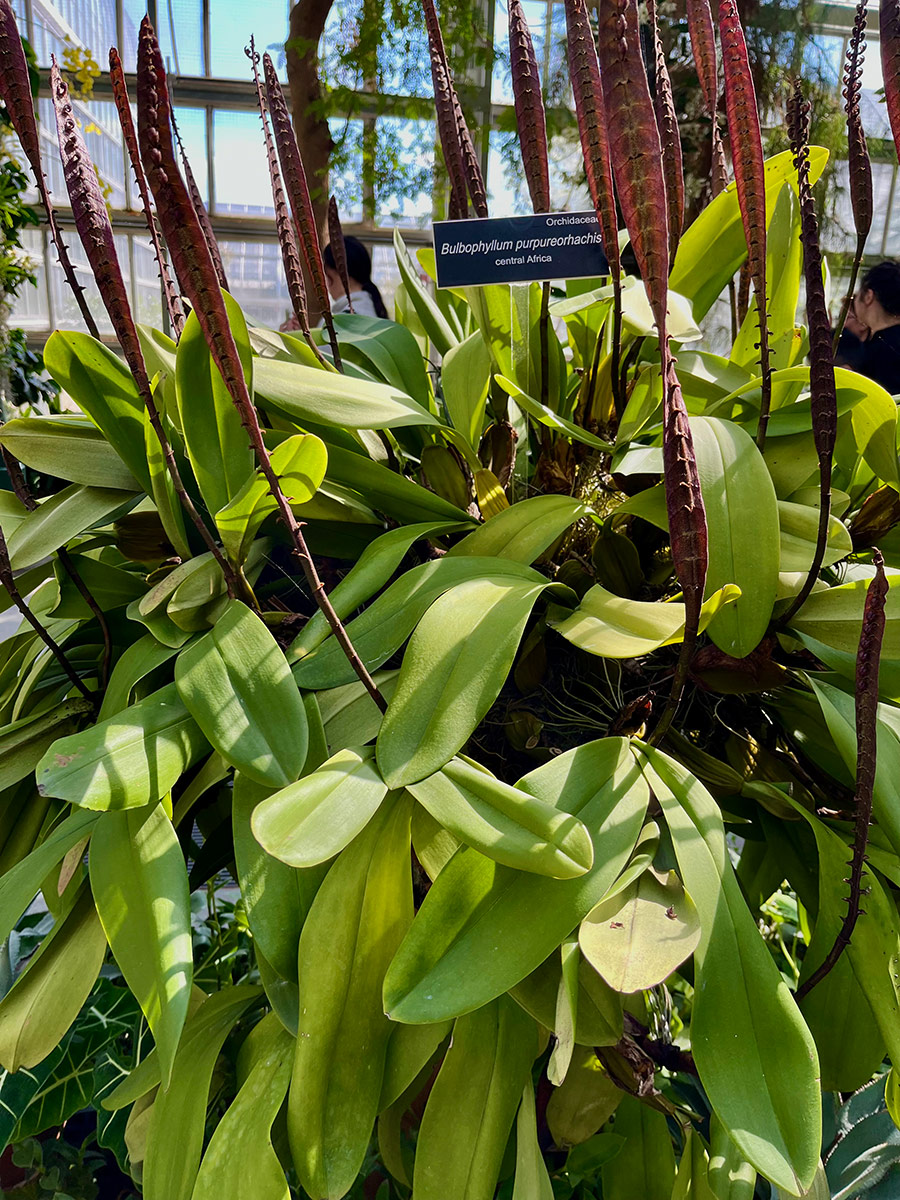 The orchid Fran mentioned above that had the most interesting bloom is commonly called the purple inflorescence bulbophyllum (Bulbophyllum purpureorhachis, Zones 10–12), and I would second her opinion because these spiny stalks are absolutely fascinating. But those little protrusions are actually spines, they’re actually the flowers of the orchid and the flat spikes act as a kind of stem. And apparently when all those tiny flowers really bloom, they have a terrible smell!
The orchid Fran mentioned above that had the most interesting bloom is commonly called the purple inflorescence bulbophyllum (Bulbophyllum purpureorhachis, Zones 10–12), and I would second her opinion because these spiny stalks are absolutely fascinating. But those little protrusions are actually spines, they’re actually the flowers of the orchid and the flat spikes act as a kind of stem. And apparently when all those tiny flowers really bloom, they have a terrible smell!
 Lastly, some more orchids are mixed into this tropical planting of agave, alocasia and various bromelia.
Lastly, some more orchids are mixed into this tropical planting of agave, alocasia and various bromelia.
Thank you so much for sharing your visit to this incredible orchid collection with us, Fran! I wish I was a little closer to D.C. so I could catch this exhibit before it ends, but you’ve convinced me to mark my calendar and schedule a visit next year.
Have you made any visits to public gardens, parks, or garden shows this season? Or are you still holding on to any photos from garden travels you made this winter? Let us know in the comments, or consider sharing your photos with Garden Photo of the Day. Follow the directions below to submit photos via email, or send me a DM on Instagram: @agirlherdogandtheroad.
We want to see YOUR garden!
Have photos to share? We’d love to see your garden, a particular collection of plants you love, or a wonderful garden you had the chance to visit!
To submit, send 5-10 photos to [email protected] along with some information about the plants in the pictures and where you took the photos. We’d love to hear where you are located, how long you’ve been gardening, successes you are proud of, failures you learned from, hopes for the future, favorite plants, or funny stories from your garden.
Have a mobile phone? Tag your photos on Facebook, Instagram or Twitter with #FineGardening!
Do you receive the GPOD by email yet? Sign up here.
Fine Gardening Recommended Products
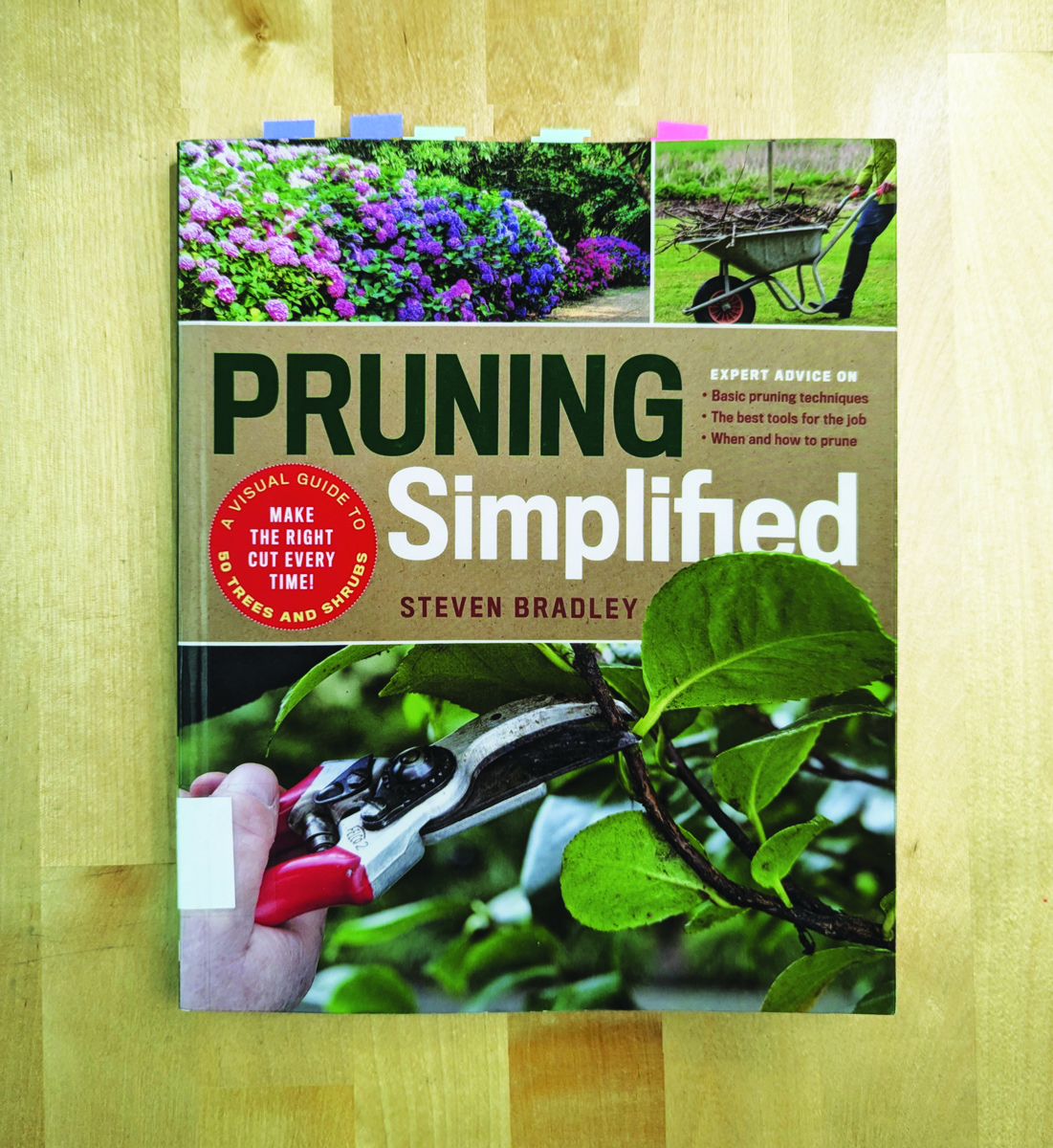
Pruning Simplified: A Step-by-Step Guide to 50 Popular Trees and Shrubs
Fine Gardening receives a commission for items purchased through links on this site, including Amazon Associates and other affiliate advertising programs.
Pruning Simplified shows you exactly how to do it. This must-have guide offers expert advice on the best tools for the job, specific details on when to prune, and clear instructions on how to prune. Profiles of the 50 most popular trees and shrubs—including azaleas, camellias, clematis, hydrangeas, and more—include illustrated, easy-to-follow instructions that will ensure you make the right cut the first time.

ARS Telescoping Long Reach Pruner
Fine Gardening receives a commission for items purchased through links on this site, including Amazon Associates and other affiliate advertising programs.
Telescopes from 4 to 7′. Cut and Hold (160) Blades. Drop forged blades for unsurpassed long lasting sharpness. Lightweight, 2.3 lbs., for continued use. Perfectly balanced for easy pruning.
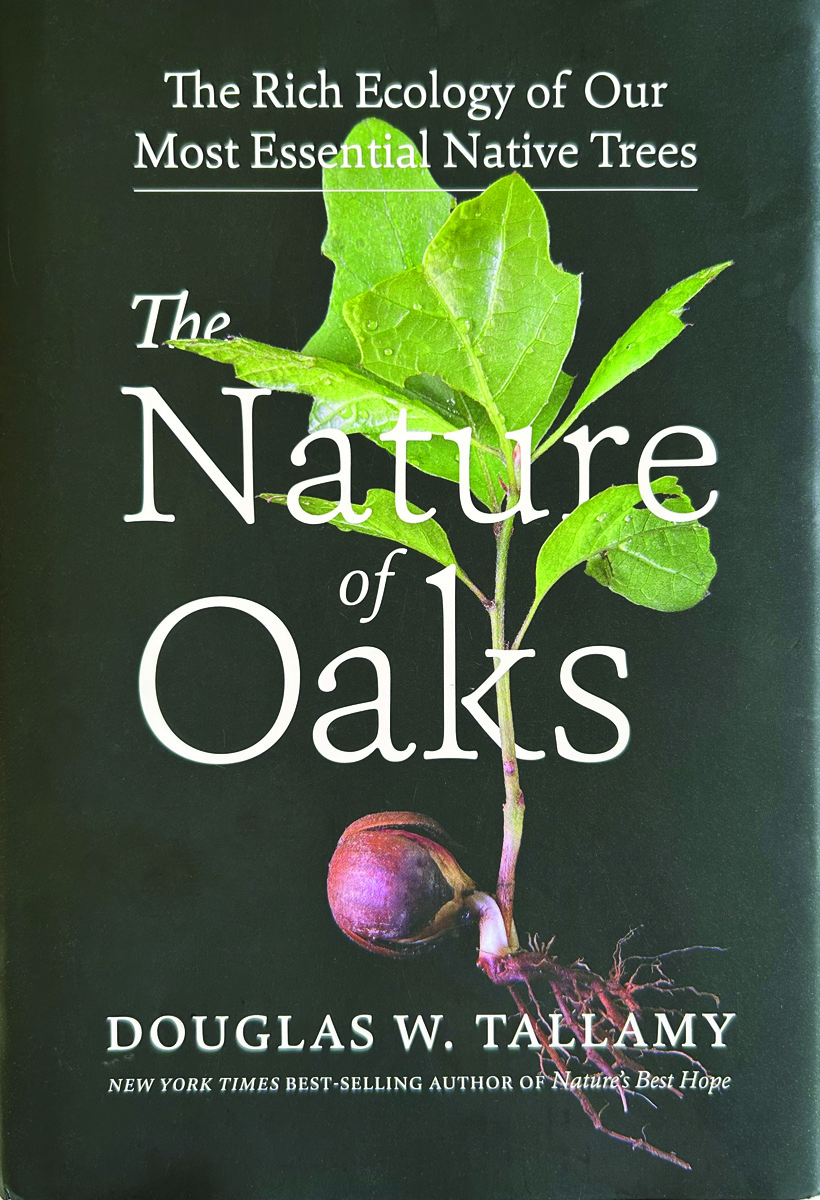
The Nature of Oaks: The Rich Ecology of Our Most Essential Native Trees
Fine Gardening receives a commission for items purchased through links on this site, including Amazon Associates and other affiliate advertising programs.
The Nature of Oaks reveals what is going on in oak trees month by month, highlighting the seasonal cycles of life, death, and renewal. From woodpeckers who collect and store hundreds of acorns for sustenance to the beauty of jewel caterpillars, Doug Tallamy illuminates and celebrates the wonders that occur right in our own backyards. He also shares practical advice about how to plant and care for an oak, along with information about the best oak species for your area.


